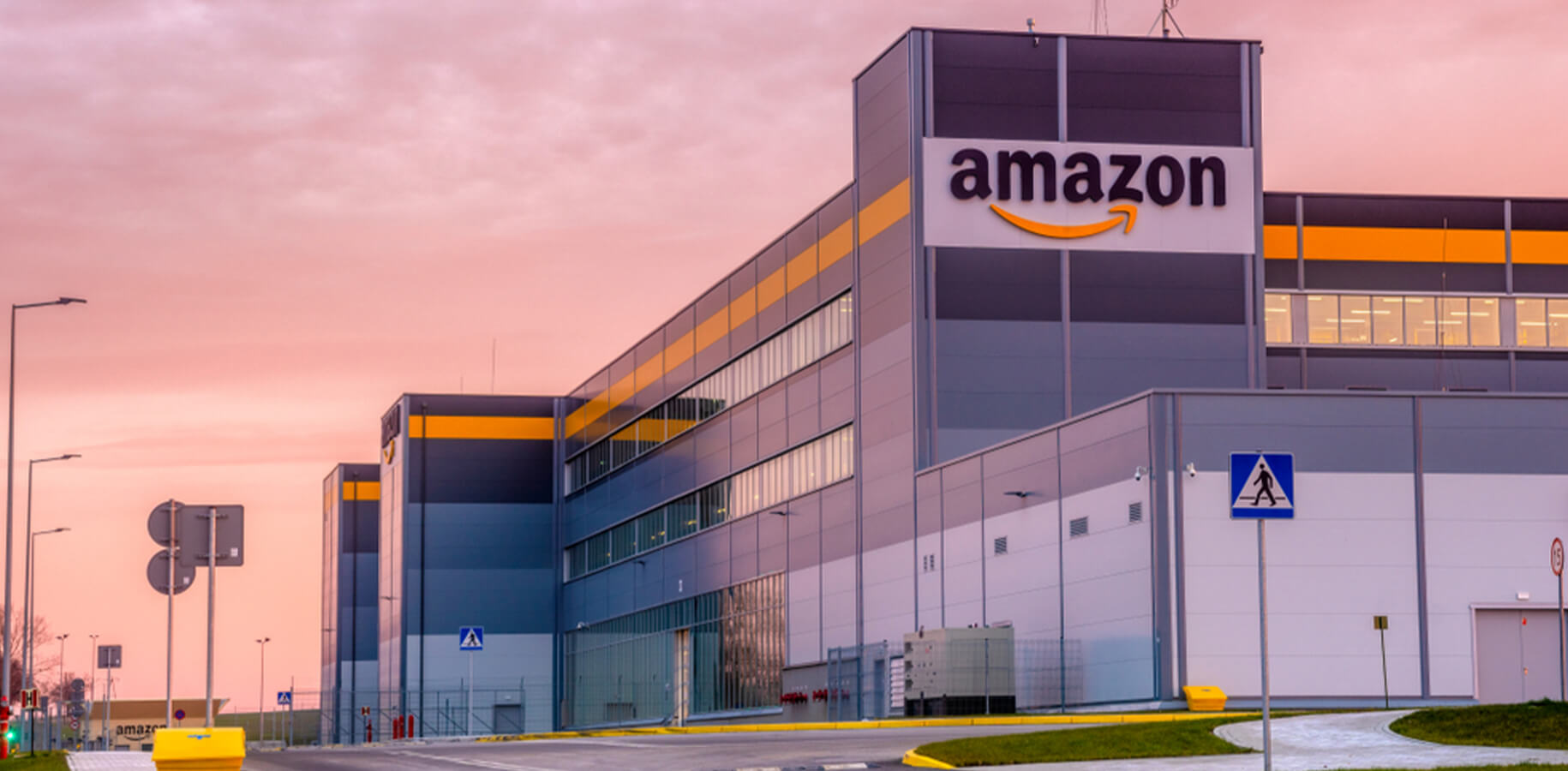Fulfilment by Amazon (FBA) stands as a transformative force in reshaping the landscape for third-party sellers within the expansive realm of the Amazon Marketplace. This comprehensive guide endeavours to unravel the intricate workings of Amazon FBA, shed light on its operational mechanisms, and shed light on the various costs involved. As we navigate through the labyrinth of this fulfilment service, we will meticulously explore the advantages and disadvantages that come with entrusting one’s business operations to Amazon. From the nitty-gritty details of fulfilment fees, inventory storage costs, and long-term storage fees, to the strategic considerations of winning the coveted Buy Box, this guide aims to equip sellers with a profound understanding of the FBA ecosystem.
But the exploration doesn’t stop there. We will embark on a comparative journey, pitting FBA against Seller-Fulfilled Prime, dissecting the nuances of costs, inventory control, and fulfilment logistics. As sellers navigate the Amazon landscape, they face critical decisions about which fulfilment method aligns best with their business goals. To aid in this decision-making process, we’ll provide actionable insights and tips to help sellers not only survive but thrive in the FBA realm. This includes a keen examination of how to maximise sales within the FBA framework, from utilising online analytics tools for strategic product research to smart product selection, bundling strategies, brand building, and proactive customer engagement.
In essence, this guide seeks to be a beacon for sellers navigating the ever-evolving landscape of Amazon FBA. By the end, sellers should not only comprehend the intricacies of the Amazon FBA growth system but also possess a strategic toolkit to harness its potential for the growth and success of their online businesses.
How Does Amazon FBA Work?
At the core of the Fulfilment by Amazon (FBA) service lies a revolutionary approach to order fulfilment that redefines the way third-party sellers navigate the complexities of the e-commerce landscape. With FBA, sellers gain the unparalleled advantage of delegating the intricate tasks of packing, shipping, and customer service to the behemoth that is Amazon. The process is elegantly straightforward: sellers dispatch their products to Amazon’s sprawling network of warehouses strategically located across the globe. Once the products reach these hubs, the e-commerce giant seamlessly takes control, assuming responsibility for inventory management, order processing, and the logistical intricacies involved in ensuring timely and efficient deliveries. This section aims to delve into the fundamental simplicity that defines the FBA process, unravelling how this innovative model alleviates the operational burdens traditionally shouldered by sellers and, in turn, cultivates an environment conducive to business growth.
The benefits of this streamlined approach are multifaceted. Sellers, unburdened by the logistics of order fulfilment, can redirect their focus towards refining their product offerings, enhancing the customer experience, and strategizing for business expansion. Amazon, armed with its extensive logistical network and expertise, not only expedites the shipping process but also integrates seamlessly with the broader Amazon ecosystem. This synergy, in turn, grants sellers access to a myriad of advantages, including the coveted Amazon Prime badge, eligibility for Prime free shipping, and the pivotal opportunity to compete for the Buy Box—a prime real estate for sellers aiming to capture the majority of Amazon sales. As we navigate the intricacies of Amazon FBA, a fundamental understanding of this streamlined process lays the groundwork for comprehending the broader implications and strategic advantages that await sellers within the FBA framework.
What Does Amazon FBA Cost?
Navigating the financial landscape of Fulfilment by Amazon (FBA) is a pivotal aspect for sellers seeking to optimise their operations on the Amazon Marketplace. A meticulous examination of the costs associated with FBA is not only prudent but essential for informed decision-making. One critical factor that shapes the cost structure is the distinction between dangerous and non-dangerous goods. The categorization of products into these two classes carries significant implications for fulfilment costs, storage fees, and overall operational considerations. Dangerous goods, encompassing items with potentially hazardous components, trigger a divergence in pricing compared to their non-dangerous counterparts, warranting careful assessment before enrolling in the FBA program.
Amazon FBA seller fees constitute another integral component of the cost analysis. These fees encapsulate the expenses related to picking, packing, shipping, customer service, and product returns. The magnitude of these fees is contingent upon the weight and dimensions of the products, further stratified into non-apparel and apparel categories. From small-standard items in non-apparel categories to special oversized items, the fulfilment fees span a spectrum that demands a meticulous evaluation by sellers, ensuring a comprehensive understanding of the financial implications associated with FBA.
As the FBA journey unfolds, inventory storage fees become a focal point of consideration. Amazon imposes monthly charges based on the daily average volume of storage space occupied by a seller’s inventory in its fulfilment centres. The fees exhibit seasonal fluctuations, with distinctions between standard size and oversized storage. The careful management of inventory becomes not only a logistical but also a financial imperative as sellers strive to optimize costs and maintain operational efficiency.
Long-term storage fees present yet another facet of financial consideration for FBA participants. If a seller’s inventory resides in an Amazon fulfilment centre for over a year, these fees come into play. The charges are delineated as either per cubic foot or per unit, adding an additional layer of financial intricacy that necessitates vigilance from sellers in managing their inventory effectively.
Integral to this financial landscape is the Inventory Health Report, a tool provided by Amazon to FBA sellers. This report furnishes a comprehensive breakdown of inventory-related metrics, competitive pricing ranges, and an Inventory Performance Index (IPI) score. Sellers can leverage this report to optimise their inventory, reduce costs, and enhance their overall performance within the FBA ecosystem.
In essence, this detailed analysis of the costs associated with FBA serves as a financial compass for sellers navigating the Amazon Marketplace. Through a nuanced understanding of the intricacies surrounding dangerous goods, fulfilment fees, inventory storage costs, long-term storage fees, and the insights garnered from the Inventory Health Report, sellers can make informed decisions that align with their business goals and financial considerations within the dynamic realm of FBA.
Amazon FBA Pros
Logistics Support and Scalability
Explore how FBA lightens the logistical burden for sellers, allowing them to scale their operations without the hassle of managing shipping and customer service.
Get All the Benefits of Amazon Prime
Understand the significance of the Prime member badge and how it contributes to increased visibility and trust for FBA products.
Win the Buy Box
Learn why winning the Buy Box is crucial for Amazon sellers and how FBA provides a competitive advantage in achieving this coveted position.
Shipping Rates Discounts
Discover how partnering with Amazon can lead to reduced shipping costs, making FBA fees more economical in the grand scheme.
24/7 Customer Support
Highlight the convenience of Amazon’s 24/7 customer service for FBA sellers, simplifying the management of customer queries and concerns.
More Storage Space
Emphasise the unlimited storage space FBA provides, enabling sellers to scale their inventory without the need for additional storage infrastructure.
Multi-Channel Fulfilment
Explore the opportunities presented by Amazon Multi-Channel Fulfilment, allowing sellers to expand their reach beyond the Amazon platform.
Amazon FBA Cons
It Can Be Costly
Discuss the financial implications of using FBA and advise sellers on how to assess the profitability of their products through the FBA calculator.
Requires Continual Inventory Management
Examine the importance of adhering to Amazon’s product preparation requirements and inventory warehousing guidelines.
Limited Branding
Explore the challenges of limited branding opportunities for FBA products and how sellers can overcome this limitation.
Commingling
Highlight the potential drawbacks of commingling, where similar products from different sellers are pooled together, impacting product quality and reputation.
More Returns
Discuss the increase in returns and their processing, emphasising the impact of Amazon’s open return policy on sellers.
Should You Use Amazon FBA?
Navigating the decision to embrace Fulfilment by Amazon (FBA) demands a strategic approach from sellers, particularly within Amazon’s highly competitive marketplace. While FBA offers streamlined operations, reduced shipping costs, and access to Prime benefits, sellers must carefully assess its suitability for their unique business needs. Considering factors like product types, profit margins, and branding requirements, sellers can make an informed decision. Understanding the competitive nature of Amazon, sellers can weigh the benefits of FBA against potential challenges, ensuring that their choice aligns seamlessly with their business goals and positions them for success within the dynamic e-commerce landscape.
Amazon FBA vs. Seller-Fulfilled Prime
When comparing Fulfilment by Amazon (FBA) with Seller-Fulfilled Prime (SFP), sellers must consider cost implications, inventory management, and fulfilment logistics. FBA entails fulfilment fees and storage costs, but it provides a hands-off approach to logistics, making it ideal for those seeking operational simplicity. On the other hand, SFP requires sellers to manage their inventory, handle shipping costs, and maintain control over fulfilment logistics. While FBA may incur higher fees, its convenience and access to Amazon’s extensive fulfilment network make it a compelling choice for sellers looking to tap into the Prime customer base. Ultimately, the decision between FBA and SFP hinges on a seller’s operational preferences, cost considerations, and capacity for managing inventory and logistics.
How to Maximise FBA Sales
To maximise FBA sales, sellers should leverage online analytics tools for strategic Amazon product research, identifying profitable and popular items on Amazon. Smart product selection is paramount; sellers should consider sales rank, competition, and potential for high turnover. Bundling items can set products apart in a competitive marketplace, providing added value for customers. Building a strong brand presence, despite FBA’s limited branding opportunities, enhances credibility and customer loyalty. Equally crucial is responding promptly to customer inquiries, reviews, and concerns, fostering a positive reputation, and encouraging repeat business. By incorporating these actionable tips, sellers can navigate the nuances of FBA successfully and optimise their sales potential on the Amazon platform.
Using Amazon’s FBA, the Right Way
Effectively integrating Fulfilment by Amazon (FBA) involves adhering to key best practices. Start small to gauge the program’s impact on your business before scaling up. Be discerning in product selection, considering factors like sales rank and competition to identify items with optimal turnover potential. Understanding the competitive market on Amazon is essential; conduct thorough market research to stay informed about trends, pricing, and consumer preferences. By starting with a focused and well-researched approach, sellers can navigate FBA successfully, mitigate risks, and position themselves for sustained growth within the dynamic Amazon marketplace.
Summarise the key takeaways from the guide, reiterating the potential benefits and challenges of Amazon FBA, and encouraging sellers to leverage this powerful tool judiciously.
In conclusion, Amazon’s FBA offers a remarkable opportunity for sellers to streamline their operations, access a broader customer base, and benefit from Amazon’s robust fulfilment network. By understanding the nuances of FBA and implementing strategic approaches, sellers can harness its potential to propel their businesses to new heights on the Amazon Marketplace.
Ready to revolutionise your Amazon selling experience and skyrocket your business to new heights? Look no further! Take the leap into seamless and efficient order fulfilment with eStore Factory’s FBA consulting expert services tailored for Amazon sellers. Our team understands the intricacies of Fulfilment by Amazon (FBA) and is dedicated to optimising your operations, reducing costs, and maximizing your sales potential on the world’s largest e-commerce platform. Whether you’re a seasoned seller or just starting out, our specialised solutions, including strategic product selection, inventory management, and brand building, will propel your business forward. Don’t miss out on the unparalleled advantages of FBA – let eStore Factory’s Amazon experts be your trusted partner in achieving Amazon success.







About The Author
Jimi Patel
Jimi Patel, is a Co-founder and CEO at eStore Factory, an Amazon SPN certified agency that serves as a one-stop solution for all your Amazon business needs. Having helped countless brands increase sales and grow their footprint on Amazon, Jimi provides the most practical and effective solutions for your business. He is highly skilled in developing and executing plans that align with your specific business goals and objectives. When not working, Jimi enjoys practicing yoga and traveling to new places. He is an avid reader and enjoys staying up-to-date on the latest trends and developments in the e-commerce industry.